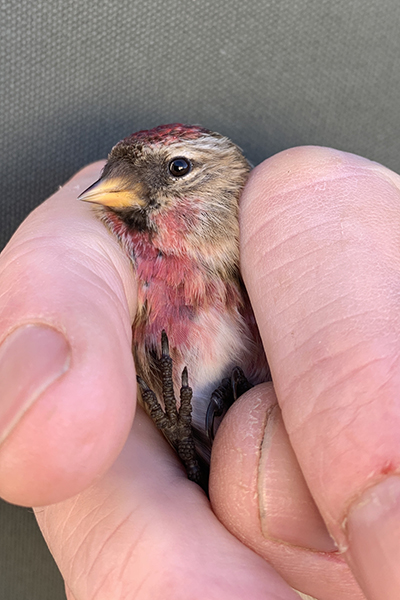We don't often get Redpolls in our garden. Usually they're a spring passage bird heard buzzing overhead. However, this year I found a small party in the village feeding in a silver birch on January 5th approximately 1 km away as the bird flies.
I was surprised to look out the window recently one morning to see a superb male Lesser Redpoll feeding with Gold & Greenfinches on one of our sunflower heart feeders. later that day it was joined by two more and the following day, following a break in the wet and windy weather we'd had, I put a mist net up to try and catch and ring a few finches.
What great little birds. In total I caught and ringed six new birds with two recaptures on subsequent days. The last time I'd ringed a Redpoll in our garden was 2018!
All the birds caught had a good fat score suggesting they hadn't moved far so could have possibly been the birds I saw nearby in January. All of them were 2nd calendar year birds (Euring 5) identifiable by a combination of tail feather shape and wear and the presence of a moult contrast in the greater or median coverts (although this was hard to photograph).
 |
| Redpoll Euring 5 tail feathers showing how pointed the retained juvenile tail feathers are. |
In total there were 6 males (above) with varying amounts of red on their breasts and 3 females (below)
Beautiful little finches and a privilege to see them in the hand.
I also ringed a few Goldfinches and Greenfinches including this brightly coloured second calendar year male (Euring 5) that had 2 retained juvenile greater coverts. This is quite unusual and made ageing easy. Most juvenile Greenfinches moult the majority of their greater coverts in their post juvenile moult with only a smaller percentage retaining the two outer ones.
Hopefully I'll cathc a few more Redpoll and possibly Siskin as they start to move north again


































































